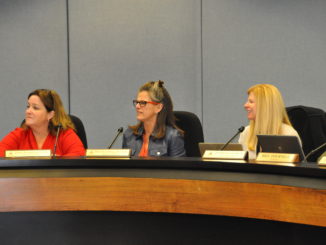
In recent months, the evaluation of teachers has been recognized as an area of issue in the nationwide effort to reform America’s education system.
In the last two years, The Los Angeles Times has published a series of articles describing some of the difficulties school districts face with upholding the quality of teaching. The most recent installment in this series discussed modifying the Los Angeles Unified School District’s current system of evaluating teachers to include a “value-added” approach.
“Value added” merely means considering a teacher’s improvement from one year to the next based on how well his or her students performed on standardized tests, such as STAR tests.
This aspect provides valuable information, but it does not address many of the important facts of good teaching, such as student response, classroom presence, command of the material, etc.
Given that a teacher is the most critical part of a child’s education and the district cannot afford to pay for ineffective teaching, an effective evaluation is necessary. Especially in this fiscal crisis, having teachers that are competent, committed and reliable is essential to providing the best education possible.
As of now, teachers in the MBUSD are evaluated one of two ways: a “360” evaluation that includes input from students and parents and an administrator evaluation in which an administrator sits in on a teacher’s class for a class period.
These methods cannot give a fully accurate picture of a teacher’s performance on their own. The 360 evaluation, once considered to be an avant-garde solution to the evaluation problem, actually neglects adequate administrator and department chair input, two necessary factors in a comprehensive evaluation. On the other hand, the administrator evaluation is an incomplete assessment which relies solely on an observation made during a single class period of observations, greatly narrowing the scope of assessment.
According to the MBUTA, a tenured teacher can either be approved or recommended for reevaluation in two years at the conclusion of an evaluation. In theory, if a teacher has repeatedly not improved, he or she works with an administrator on an improvement plan and could ultimately be recommended for dismissal if the teacher is proven to be a detriment to his or her students’ learning.
However, in practice the process is not as simple as it appears and rarely results in the dismissal of a teacher.
Many opponents to teachers unions favor a more punitive approach, which is both counterproductive and naive. According to a study done by LA Weekly, the average cost of firing a teacher in LAUSD is $500,000. Although MBUSD is certainly not comparable in many areas, it is obvious that the district doesn’t have the resources to threaten job status.
Thus, a more constructive and holistic approach to the evaluation process is the best way to improve the quality of teaching in the district.
For an evaluation to be effective, it must include student, peer, parent, department chair and administrator input, as well as standardized testing scores (such as STAR and AP) and grades on department finals. Considering such a wide range of information will provide a complete picture of teacher performance and give concrete focus to areas of improvement.
The respective weight of these components should also differ between the elementary and the secondary level. For instance, a student’s input should progressively outweigh the parent’s as the student advances through the education system.
A revised evaluation system would allow an administrator and teacher to devise a more accurate improvement plan at the conclusion of the evaluation.
This holistic approach to the evaluation process would do a better job of improving the quality of teaching in the district than the current system, while working within the realities of our district’s budget and tenure system.




Leave a Reply